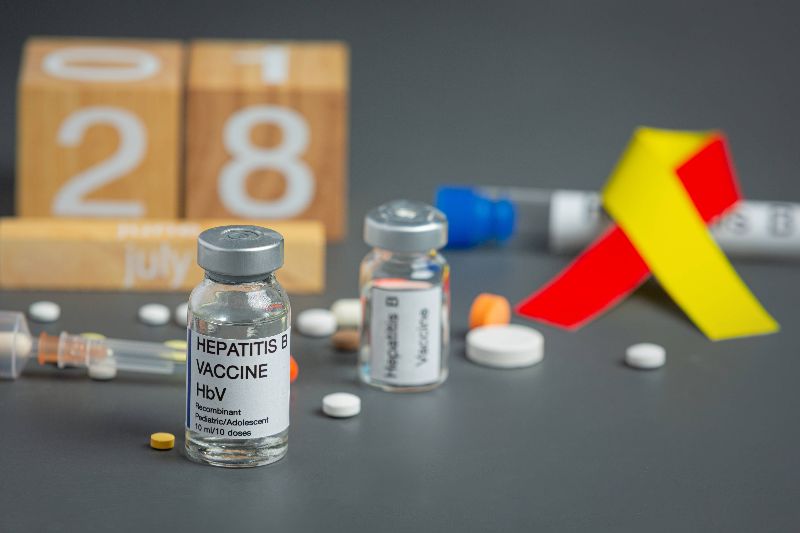Image by wirestock on Freepik
Small cell lung cancer (SCLC) is a highly aggressive and metastatic form of lung cancer, characterized by rapid growth and early dissemination. Consequently, most patients are diagnosed at an advanced stage. While initial chemo-radiotherapy can significantly reduce tumor size, relapse occurs quickly, and the efficacy of subsequent treatments is limited. Recently, immunotherapy has made significant strides in cancer treatment, particularly with T-cell immune checkpoint inhibitors (such as PD-1/PD-L1 inhibitors) demonstrating remarkable efficacy in various types of cancer. However, SCLC responds poorly to these immune checkpoint inhibitors. Research has revealed that SCLC cells highly express CD47 on their surface, which allows them to evade macrophage attacks. Therefore, blocking the interaction between CD47 and SIRPα can lift this inhibition, promoting the phagocytosis of cancer cells by macrophages and enhancing the anti-tumor immune response. To address the limitations of radiotherapy, Yoko et al. proposed a treatment strategy combining radiotherapy with CD47 blockade. Their goal is to enhance the local anti-tumor effects of radiotherapy and induce systemic anti-tumor immune responses, particularly producing inhibitory effects on distant, non-irradiated tumors (abscopal effect).
The researchers implanted SCLC cells into both flanks of mice. Once the tumors grew, they performed local radiotherapy on one side while administering a systemic CD47 blocking antibody. They evaluated the anti-tumor effects of different treatment groups by measuring tumor volume and analyzing immune cell infiltration within the tumors. Additionally, they used flow cytometry and single-cell RNA sequencing to perform a detailed analysis of the types and functional states of immune cells in the tumor microenvironment.
The study found that in NSG mice (which lack functional T cells, B cells, and NK cells but retain functional monocytes and macrophages), a single dose of 5 Gy radiotherapy significantly inhibited the growth of SCLC tumors, and 10 Gy radiotherapy almost completely eradicated the tumors. When radiotherapy was combined with CD47 blockade, the tumor inhibition effect was significantly enhanced. Further analysis showed that this combined treatment led to a significant increase in macrophage infiltration in the tumor
More importantly, the study observed for the first time that the combination of radiotherapy and CD47 blockade could induce an abscopal effect, where significant anti-tumor effects were noted in non-irradiated tumor sites. This effect was consistent across different radiation doses and tumor sites and persisted even in the absence of T cells, indicating that the abscopal effect is primarily mediated by macrophages rather than T cells.
To further investigate the role of macrophages in the abscopal effect, the researchers used in vivo anti-CSF1 antibody treatment to deplete macrophages in mice. They found that this treatment significantly weakened the abscopal effect of the combined radiotherapy and CD47 blockade. Single-cell RNA sequencing analysis revealed a significant increase in the number of macrophages with inflammatory characteristics in the tumors of mice receiving the combined treatment.
Additional in vitro experiments demonstrated that irradiated SCLC cells could secrete various cytokines, such as CSF1, CCL2, and MCP3, which promote macrophage migration and phagocytic activity. To verify the critical role of CSF1 in the abscopal effect, the researchers knocked out the Csf1 gene in SCLC cells and found that these cells, after radiotherapy, could not effectively induce macrophage infiltration and anti-tumor effects at distant tumor sites. This result indicates that the secretion of CSF1 is crucial for macrophage migration and the generation of the abscopal effect.
In summary, the researchers proposed two novel research approaches: a combined treatment strategy and the induction of the abscopal effect. They successfully validated the mechanism by which the combination of radiotherapy and CD47 blockade activates macrophages, inducing anti-tumor effects at distant tumor sites. This challenges the traditional view that the abscopal effect is primarily mediated by T cells, providing a new understanding and research direction for the treatment of SCLC. Furthermore, the study not only validated its effects in the SCLC model but also observed similar results in other cancer models, such as lymphoma and colon cancer. This suggests that the strategy of combining radiotherapy with CD47 blockade may have broad applicability and holds promise for various types of cancer.
Regrettably, the study did not provide a detailed elucidation of the specific molecular signaling pathways involved in macrophage migration, activation, and phagocytosis of cancer cells, limiting a comprehensive understanding and optimization of this treatment strategy. Therefore, although the combination of radiotherapy and CD47 blockade shows great potential in cancer treatment, future research still faces significant challenges.
The next steps involve conducting larger-scale and more diverse studies to delve deeper into its mechanisms. This includes identifying the precise pathways and molecular markers for macrophage migration from the irradiated site to the distant tumor site, as well as analyzing other potentially involved cell types and molecular signals, such as dendritic cells and natural killer cells. Additionally, the broad applicability and safety of this combined treatment need to be verified to optimize therapeutic protocols, thereby promoting the clinical translation and application of this emerging therapy.
Nishiga, Y., Drainas, A.P., Baron, M. et al. Radiotherapy in combination with CD47 blockade elicits a macrophage-mediated abscopal effect. Nat Cancer 3, 1351–1366 (2022). https://doi.org/10.1038/s43018-022-00456-0






Post comments